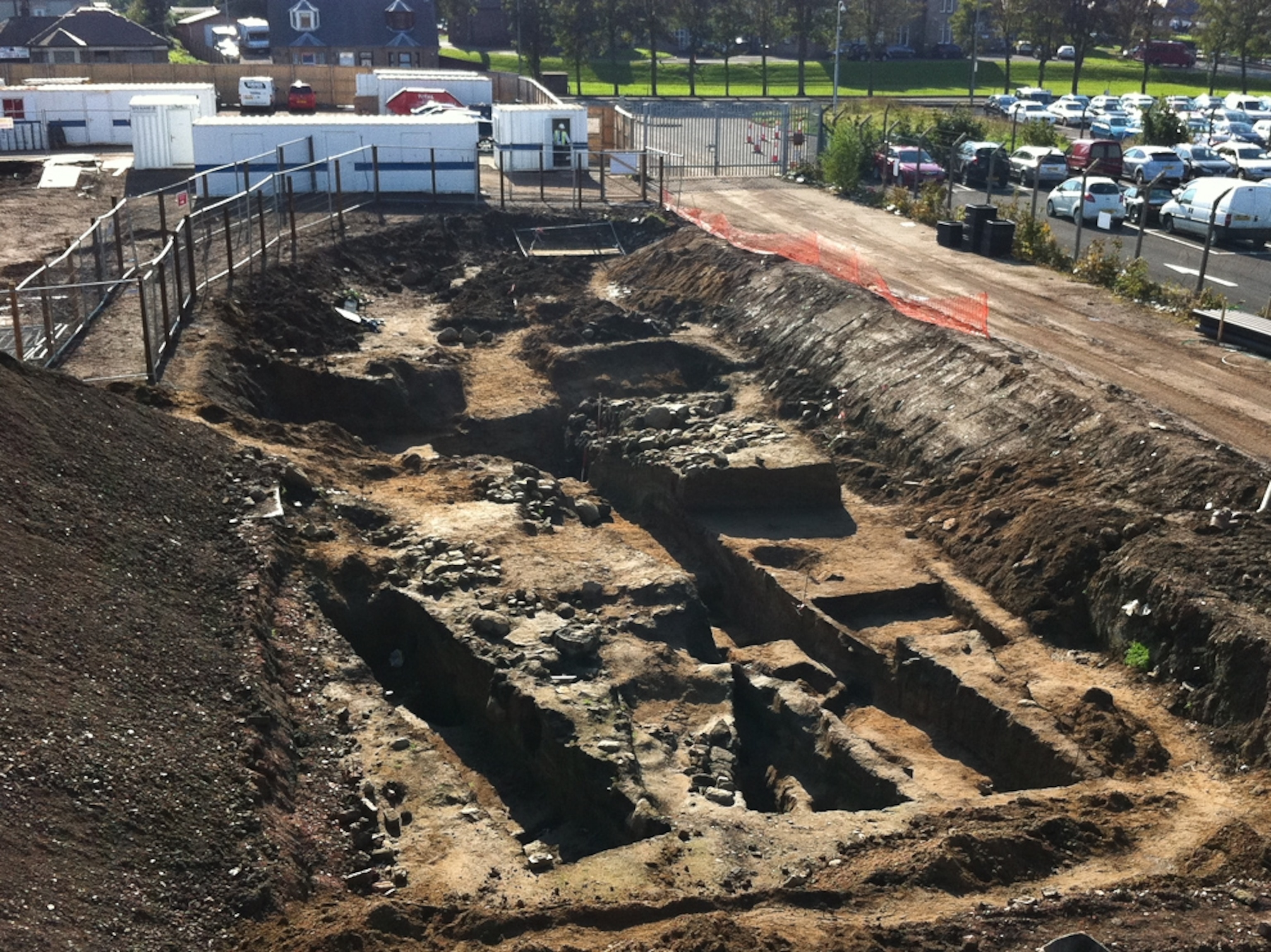
120 Roman Shoes Found in U.K.; "Substantial" Fort Find
Leather footwear found among jewelery, coins at supermarket construction site.
About 60 pairs of sandals and shoes that once belonged to Roman soldiers have been unearthed at a supermarket construction site in Camelon, Scotland (see map), archaeologists say.
The 2,000-year-old leather footwear was discovered along with Roman jewelry, coins, pottery, and animal bones at the site, which is located at the northern frontier of the Roman Empire.
(Also see "Pictures: Gold Treasure, Roman Coins Revealed in U.K.")
The cache of Roman shoes and sandals—one of the largest ever found in Scotland—was uncovered recently in a ditch at the gateway to a second century A.D. fort built along the Antonine Wall. The wall is a massive defensive barrier that the Romans built across central Scotland during their brief occupation of the region.
The find likely represents the accumulated throwaways of Roman centurions and soldiers garrisoned at the fort, said dig coordinator Martin Cook, an archaeologist with AOC Archaeology Group, an independent contractor in Britain.
"I think they dumped the shoes over the side of the road leading into the fort," he said.
"Subsequently the ditch silted up with organic material, which preserved the shoes."
Despite being discards, the hobnailed shoes are in relatively good condition, Cook added.
Newfound Fort One of Decade's Biggest Finds
While the new supermarket site also includes the remains of a first century Roman fort and ancient field systems, excavations have centered on the area of the younger Antonine fort.
"We've got evidence of a really substantial structure," Cook said. "You would have had a square fort with stone walls and three or four ditches around them." (Watch a video about Roman military design on the National Geographic Channel.)
Other finds include a Roman axe and spearhead, three or four brooches, French Samian ware—which is a high-prestige ceramic—glass, and standard pots, he said.
"I would say it is one of the most important forts in Scotland," Cook added. "This will be one of the most important Scottish excavations in the last decade."
(See "Massive Prehistoric Fort Emerges From Welsh Woods.")
The Romans are believed to have abandoned the Antonine Wall and retreated south toward England in about A.D. 165.
The Camelon dig team is on the lookout for evidence that could challenge this by suggesting the Romans stayed longer in the region.
To date, however, the excavation seems to confirm that the Romans legged it—minus their footwear, of course.





